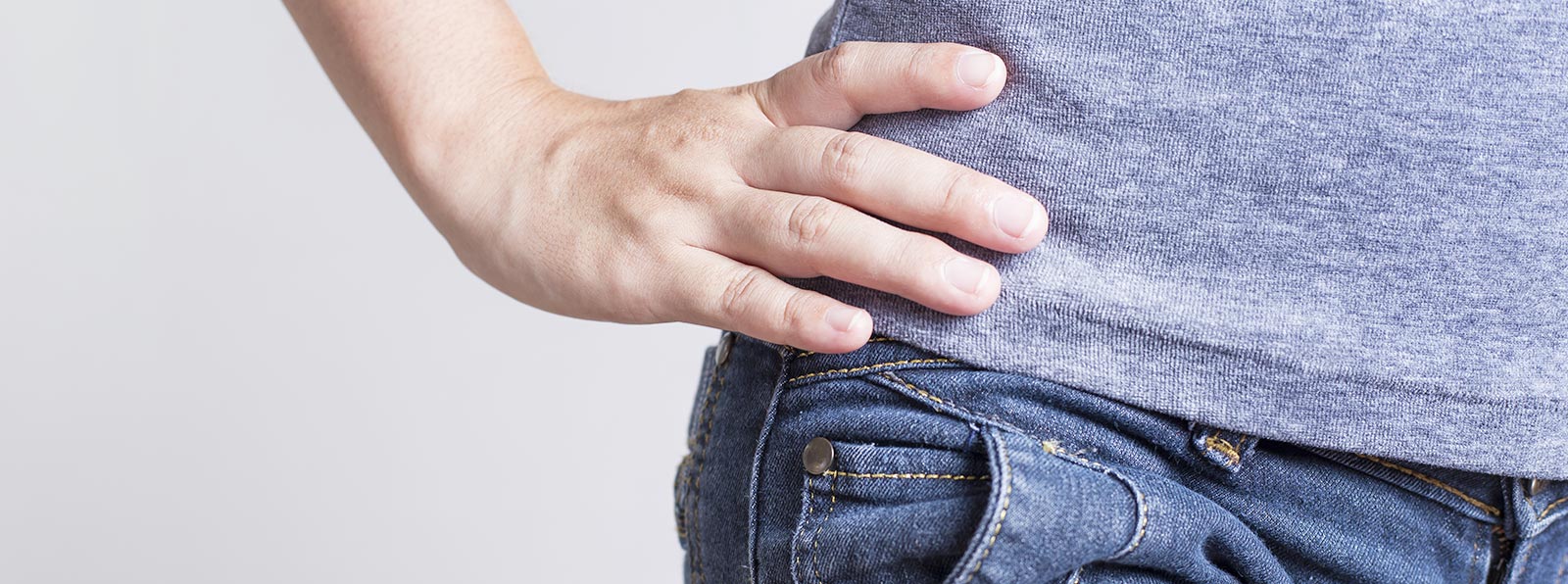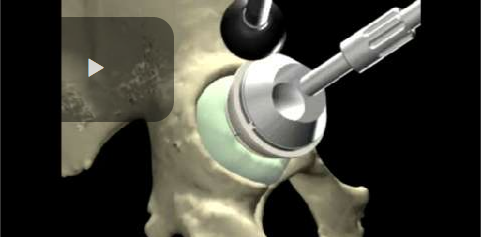
Total hip replacement is one of the most successful treatment interventions in current medical practice. In this operation, the ball and socket of the natural hip joint are replaced by a prosthetic joint.
A large number of people have hip replacements and this page is intended to help the reader understand hip replacement operations, their advantages and disadvantages, and the limitations.
Arthritis of the hip
The natural hip joint has a socket called the acetabulum, which is a part of the pelvic bone. The top end of the thigh bone, called the head of femur, is rounded and fits into the socket to form the hip joint. The articulating surface of the acetabulum and head of femur is lined with a very smooth covering called the articular cartilage.
In arthritis, the articular cartilage becomes thin and wears out. Various conditions can affect the integrity of the articular cartilage. Most commonly, it is osteoarthritis (also called as osteoarthrosis), and other conditions include rheumatoid arthritis, arthritis following injury to the hip, ankylosing spondylitis, arthritis secondary to malformation of the hip, gout, Paget’s disease, and rarely tumours and infections.
Hip replacement is carried out to relieve pain from the degenerate joint.
"I cant believe the difference the new hip has made to my life. Very happy to be free of pain after suffering for so long" - John Ellis, Cardiff
-

-
 Arthritis of the left hip (to the right side of the viewer)
Arthritis of the left hip (to the right side of the viewer)
Arthritis of the left hip (to the right side of the viewer)
Arthritis of the left hip (to the right side of the viewer)
-
 X ray appearance after Left side Total Hip Replacement
X ray appearance after Left side Total Hip Replacement
X ray appearance after Left side Total Hip Replacement
X ray appearance after Left side Total Hip Replacement
https://cardiffhipandknee.com/hip/hip-replacements#sigProId4682088e05
Primary or revision hip replacement
The first time the natural hip joint is replaced, it is known as 'primary' hip replacement. If further operations are required to change one of both components, it is called 'revision' hip replacement.
In a primary hip replacement, the socket is prepared for insertion of an acetabular component, and the head of femur is removed and a femoral component inserted in its place. The two components are fixed into bone either with special bone cement, or by cementless fixation. In cementless fixation, the size and shape of the prosthesis accurately matches the prepared bone and the metal is coated with a special surface which encourages bone ingrowth into the metal, hence providing a firm fixation and long term stability.
Computer navigation for hip replacement surgery
The use of computer navigation for accurate placement of components has been is practice for over 10 years. It improves reliable positioning of the socket and the stem. Navigation is simply a technique, and the actual prosthesis is the same as with conventional technique.
Materials for hip joint
Hip joint prostheses can be cemented or cementless. The acetabular components in cemented sockets are made of ultra high molecular weight poly ethylene (UHMWPE). These are fixed to bone with Poly methyl meth acrylate (PMMA) bone cement.
Cementless sockets have a metal backing, like a shell, which is fixed to bone. Within this shell, a (UHMWPE) plastic liner, or a metal liner, or a ceramic liner can be inserted. Cementless sockets allow multiple options for choice of liner. Similarly, the femoral component can be cemented into the thigh bone, or it can be cementless.
Cemented hip replacements have traditionally been used a lot in the past. Currently, cementless hip replacements are increasingly popular.
Surgical approach for hip surgery
I employ a muscle sparing approach for hip surgery, which completely avoids injury to the main abductor muscle to the hip. This is the most important muscle to enable normal walking after hip surgery. As a result, most of my patients are able to discard crutches within 2 to 4 weeks. I have used this approach for over the last many years in hundreds of patients and have been very satisfied with the speedy recovery after surgery, and the ability to achieve normal gait.
The ANTERIOR approach for hip surgery has no evidence in current literature for superiority over any other approach for hip replacement. It has been done in various forms and modifications for over four decades. The risk of complications is slightly higher and hence I do not use this in my practice.
The operation
 Hip replacement surgery is done under general anaesthetic or epidural anaesthetic. Epidural anaesthetic is more commonly used, and it helps in postoperative pain relief as well.
Hip replacement surgery is done under general anaesthetic or epidural anaesthetic. Epidural anaesthetic is more commonly used, and it helps in postoperative pain relief as well.
The operation is done with patients lying on their side. The incision varies between 10cm to 15cm in length and the surgery takes 60 to 90 minutes. Usual hospital stay is between 2 and 3 days. Over the last 2 years, we have used enhanced recovery program after surgery and this has enabled 40% patients to be discharged from hospital on the day after surgery.
After surgery, mobilisation is started on the following day. Initially a Zimmer frame is used to help mobility and this quickly progresses to crutches and then sticks. By 4 to 6 weeks, most people are able to mobilise independantly without walking aids, and some may take up to 3 months to regain best mobility.
The physiotherapists will work closely after surgery to improve muscle strength and movements and with progression of exercises, the function in the replaced hip will improve. A list of exercises and precautions is provided, which enables individuals to achieve best possible outcome.
Care after surgery
Following hip replacement, driving is not recommended for 4 to 6 weeks. The insurance company should be informed about the hip replacement surgery.
Heavy work and lifting heavy objects is not recommended after hip replacement. Running and contact sport are also not recommended. Golf is possible, as is doubles tennis. Riding a bicycle is allowed after 2 to 3 months. Walking is not restricted after hip replacement.
Gardening is limited and many people may experience difficulty in kneeling down and / or sitting in a low seat. This is a permanent restriction.
If there was significant stiffness in the hip prior to surgery, it may be difficult to regain further movement after surgery. This means tying shoe laces and cutting toe nails may be difficult in these situations. There are specific methods which patients are taught postoperatively to manage activities of daily living, and these are part of routine rehabilitation.
These are broad guidelines and individual circumstances dictate rehabilitation for total hip replacement.
Through meticulous technique and high standard of care, the outcome following hip surgery is better than ever before.
I currently do over 200 hip and knee replacement operations annually. In my experience, Infection rate following hip replacement is 0.1%, dislocation rate is 0.3% and the satisfaction rate after hip replacement surgery is 98%. The percentage of patients requiring redo operations is 1% at 4 years among all my patients with hip replacements.
These results are possible through meticulous technique, attention to detail and careful selection of implants.
If you have further questions, please contact us and I will be delighted to respond to any comments, questions or concerns.
Please, click on 'Risks of hip replacement surgery' to know more.

